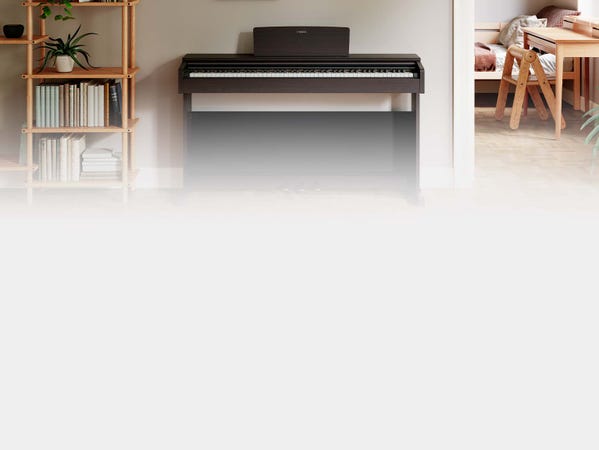Key features of a digital piano
A digital piano is an electronic version of a traditional, acoustic piano. It uses either synthesized emulation of the piano’s sound, or recorded notes, playing the audio through a built-in speaker, headphones, or outputting it to an amplifier. The best digital piano models replicate the 88 key setup of a traditional piano, and those keys are weighted to make the playing experience as realistic as possible.
The advantages of a digital piano are many, including lower weight and a smaller form factor (so it takes up less space and is far easier to move), lower cost, and the option of being able to reproduce additional sounds and effects. When used with headphones, this instrument can operate silently. And there’s no ongoing effort to keep a digital piano in tune ...
Types of digital pianos
With the flexibility of an electronic design, digital pianos come in many different form factors and styles. Some copy the look of a traditional instrument, with a weighted key digital piano built into an upright stand, and a pedal for sustain or effects. Others are standalone units that you can place on any solid horizontal surface, or mount to a digital piano stand. There are portable models, ones with built-in sheet music stands, and versions that offer synthesizer-like features such as the ability to reproduce bass, drum and strings. While black is the traditional colour, you can even find a white digital piano!
While most are 88 key digital pianos, there are versions that have fewer keys in order to make them even more compact.
Factors to consider when choosing a digital piano
There are many factors to consider when picking a digital piano. The first distinction is between a model that you use for fun versus a professional-quality instrument. This has a ripple effect on everything from sound quality, to inputs and outputs, the feel of the keys, polyphony support (how many notes that can be played simultaneously), and price.
Connectivity is important. Do you want a digital piano that is entirely self-contained, or would you like the option of Bluetooth wireless connectivity to a smartphone or computer? Do you need a MIDI interface so the keyboard can be used to play music on a PC running applications like GarageBand? Do you want the ability to play the sound of additional instruments, or is the digital piano being used literally as an alternative to a traditional piano? Does it need to be portable for carrying to gigs or moving out of the way when not in use? Finally, some people have a preference for specific brands, such as Yamaha, Roland, Korg or Casio.
The best digital piano for beginners
The best digital piano for beginners will include features and tools that support learning. Some models can connect to a smartphone app that assists with lessons, while others offer a Duet mode that lets the student and teacher play together on the same keyboard. A metronome function would also be helpful for beginners, while a built-in music library makes it easier to play along.



